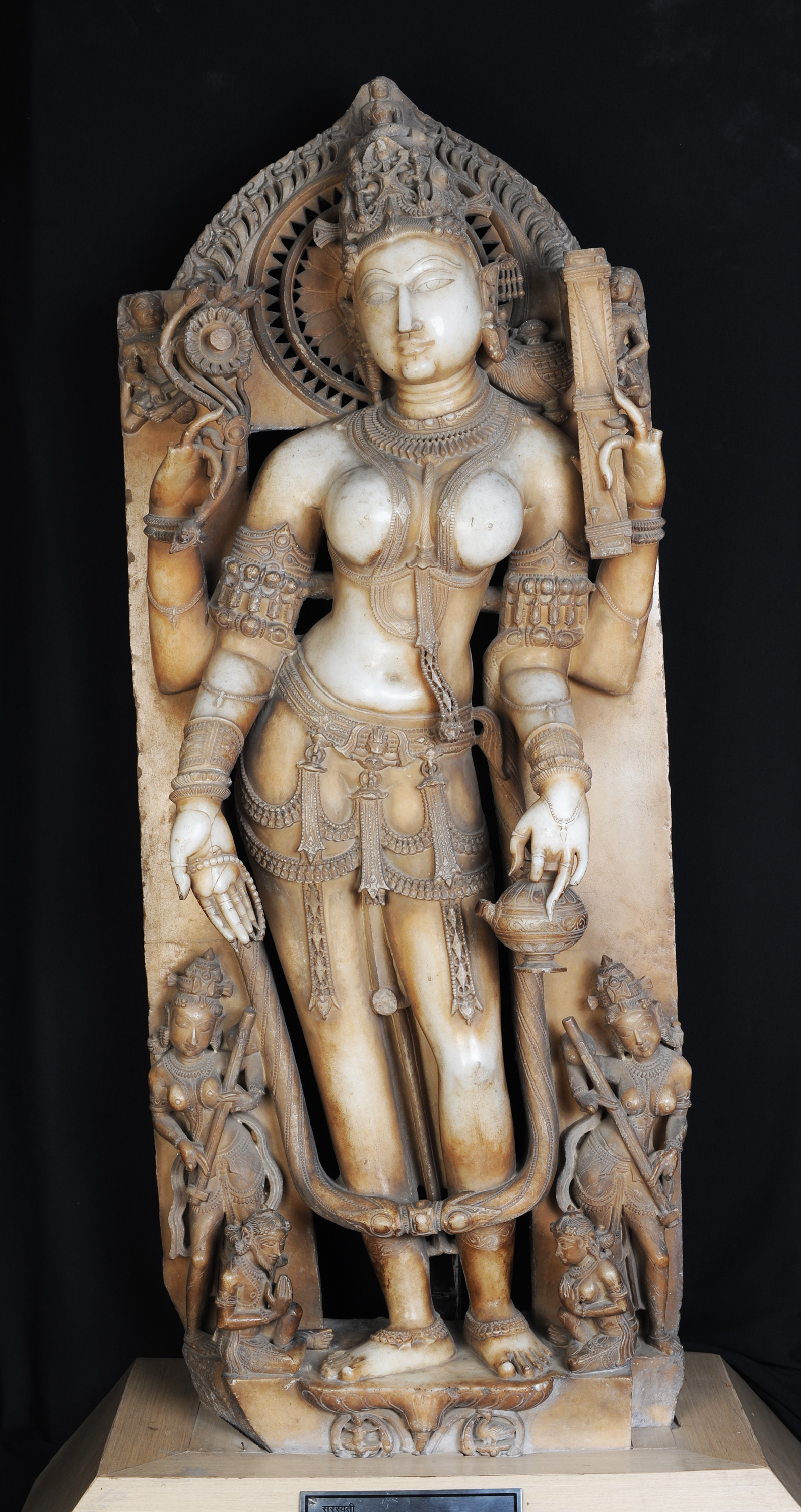Discover, Learn, immerse, Connect
Saraswati, Goddess of Learning and Wisdom
The Chauhans also known as the Chahamana dynasty were historically a powerful community in Rajasthan. They claimed an association with the Suryavanshi or the Solar Dynasty linking themselves to the family of Shri Ram. The most prominent King of this dynasty was their last ruler, Prithviraj Chauhan (1178–1192 CE)
Brahma created the universe but soon realised that it had no form and was full of chaos. In order to bring form and wisdom to the universe, he created knowledge. Thus, Saraswati emerged from Brahma’s mouth and brought order to the cosmos. She later became the bride of Brahma. In the Hindu pantheon, Saraswati is the goddess of learning, intelligence, purity and wisdom. She is also known as Shakti (female power) of the creator, Brahma. Ancient scriptures (namely, the Vishnudharmottara, Amsumadbhedagama and the Rupamandan) provide her with the status of an independent Goddess dressed in a white garment, carrying a stylus, a manuscript, a lotus, a rosary, a Veena and a vessel of nectar in her hands. She is also known to be mighty and powerful. In the Vedic times, she was associated with a river, whose waves were known to break through mountains. Her power was also signified in the celestial ocean (the Saraswati river of those times has disappeared now). Saraswati is closely connected with the image of a protector of the Vedic cult and also its guardian. Anticipating her nature of eloquence and learning, the hymns in the Rig Veda describe her as the one who awakens every pious thought. In Jainism, Saraswati has been recognized as the Goddess of knowledge and wisdom known by different names such as Srutadavata, Bharati, Sarada etc.
This sculpture is a highly sophisticated work of art made in white marble depicting Saraswati in the form of Vagdevi of the Jain pantheon. The four-armed deity, stands on a lotus pedestal, holds a lotus, a book, a rosary and a vase in her hands. The lower right-hand holds the Varada Mudra, signifying showering of blessings.
The sculpture is adorned with minutely carved ornaments and is seen flanked by female attendants.
The sculpture is adorned with minutely carved ornaments and is seen flanked by female attendants.
Vasant Panchami or the festival of spring is dedicated to Goddess Saraswati who is the goddess of knowledge, language, music arts. She symbolizes energy and power in all its form, including longing and love (kama). The Saraswati Vandana is one of many mantras chanted to seek blessings of the Goddess Saraswati, the mother of the Vedas and knowledge. Vandana is a Sanskrit word meaning 'wisdom.' Chanting the Saraswati Vandana mantra is believed to remove all the obstacles in one's education and career as one realizes the value of knowledge.
Curse of Saraswati on Brahma: Saraswati was angered by Lord Brahma’s display of uncontrolled passion for her. It is believed that Brahma who had three heads wanted to see Saraswati at all times and in all directions. Brahma was hence cursed by Saraswati and thus there hardly exist any temples to revere him or festivals that celebrate him. Today we only have two major temples in the name of Brahma, one in Pushkar, Rajasthan and the other in Kumbakonam, Tamil Nadu.
 Government of India
Government of India



